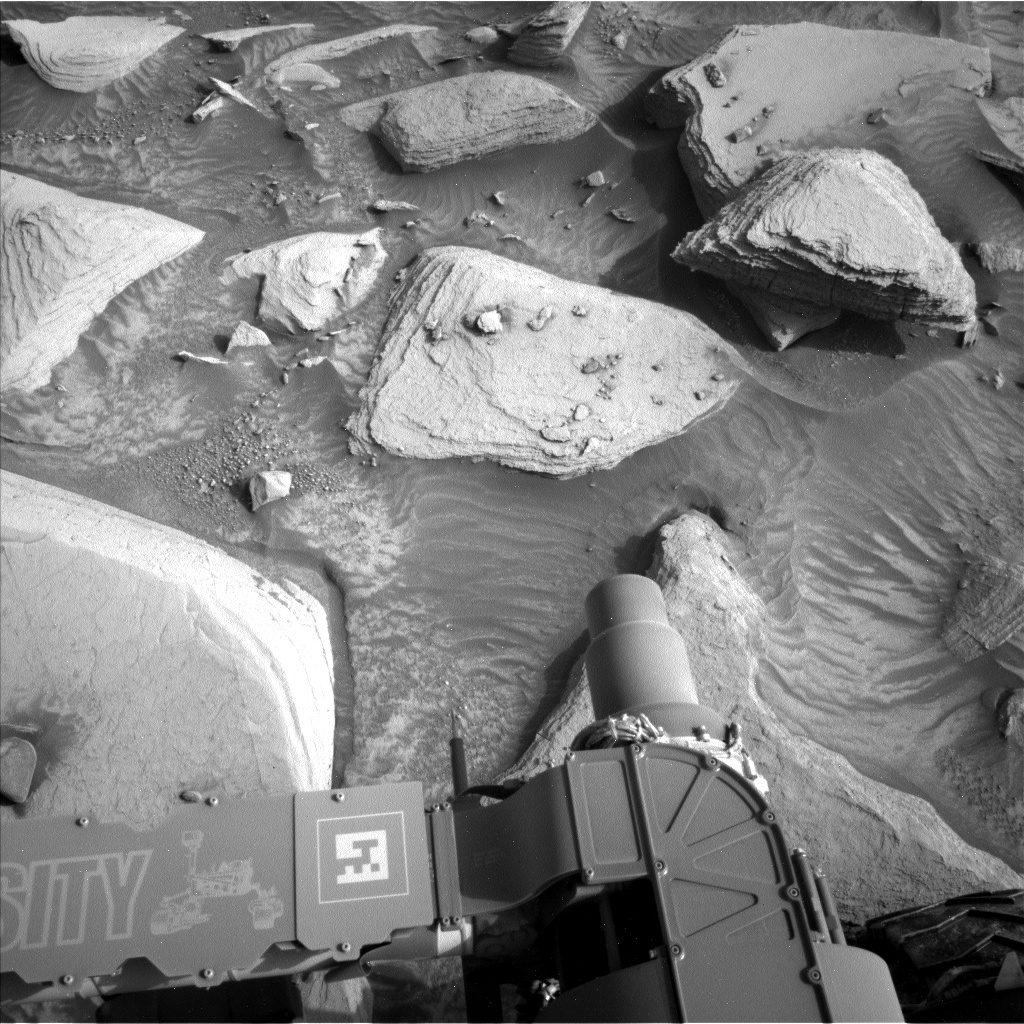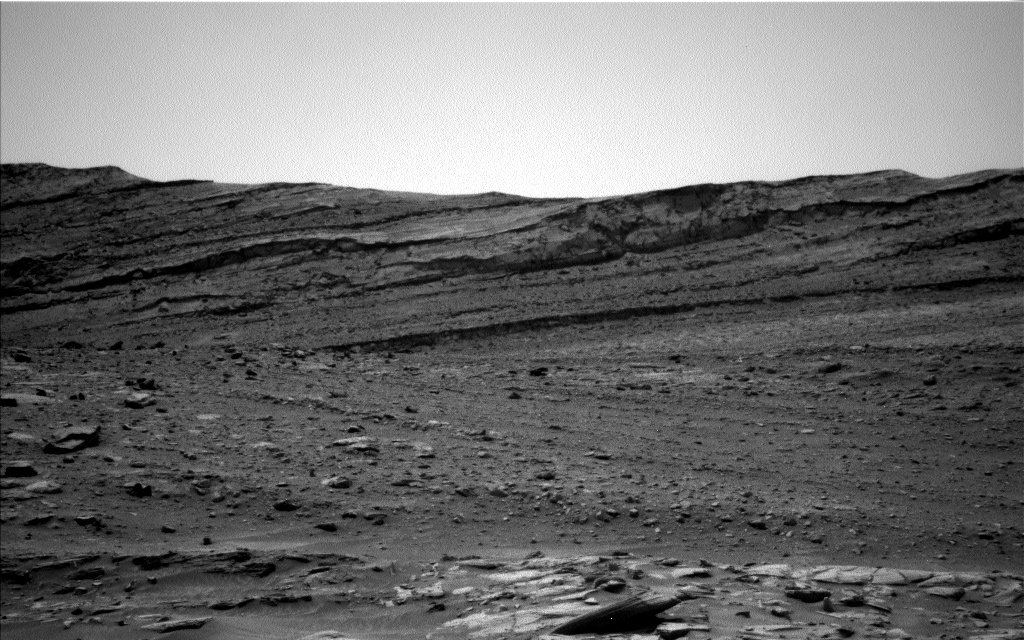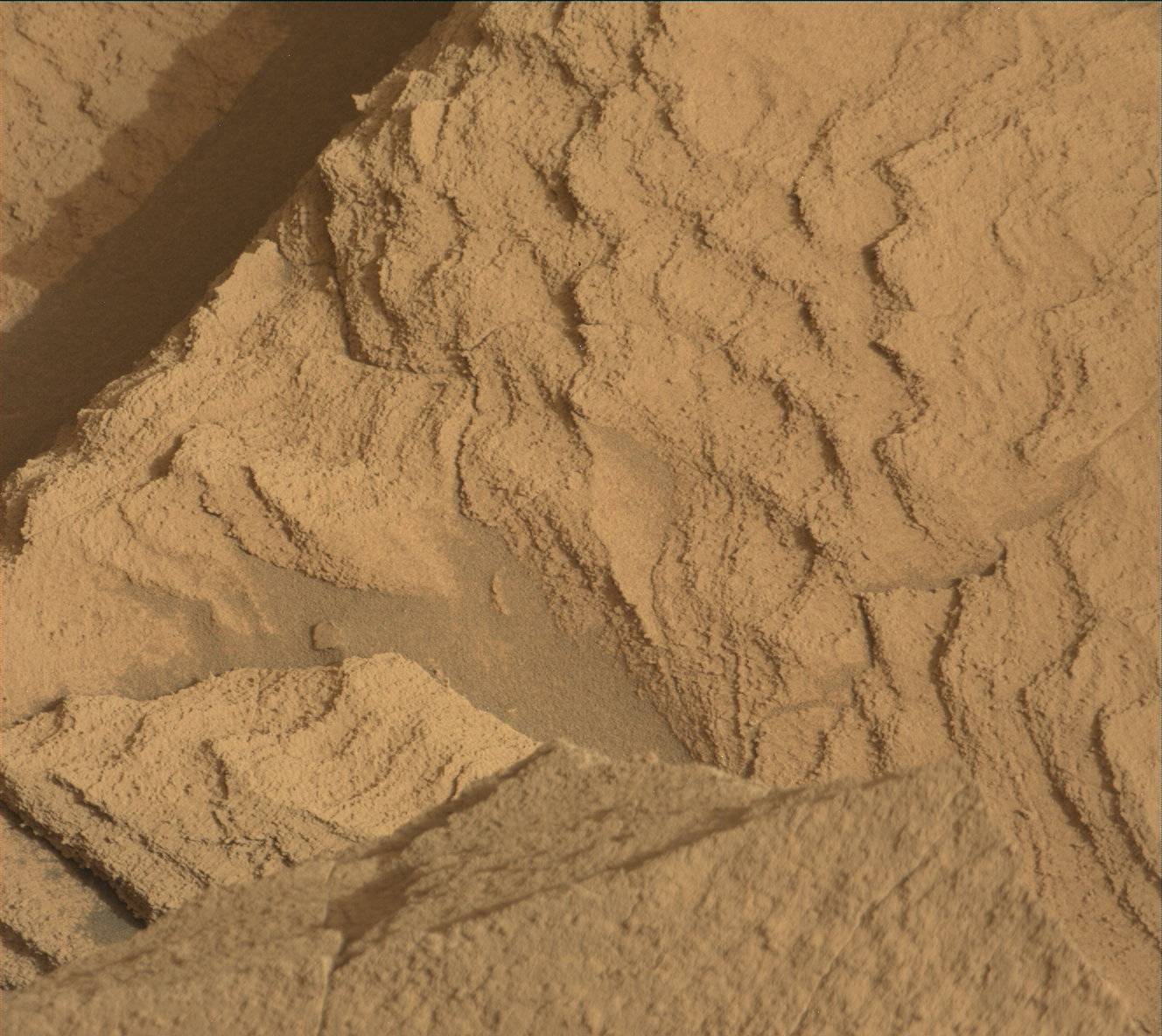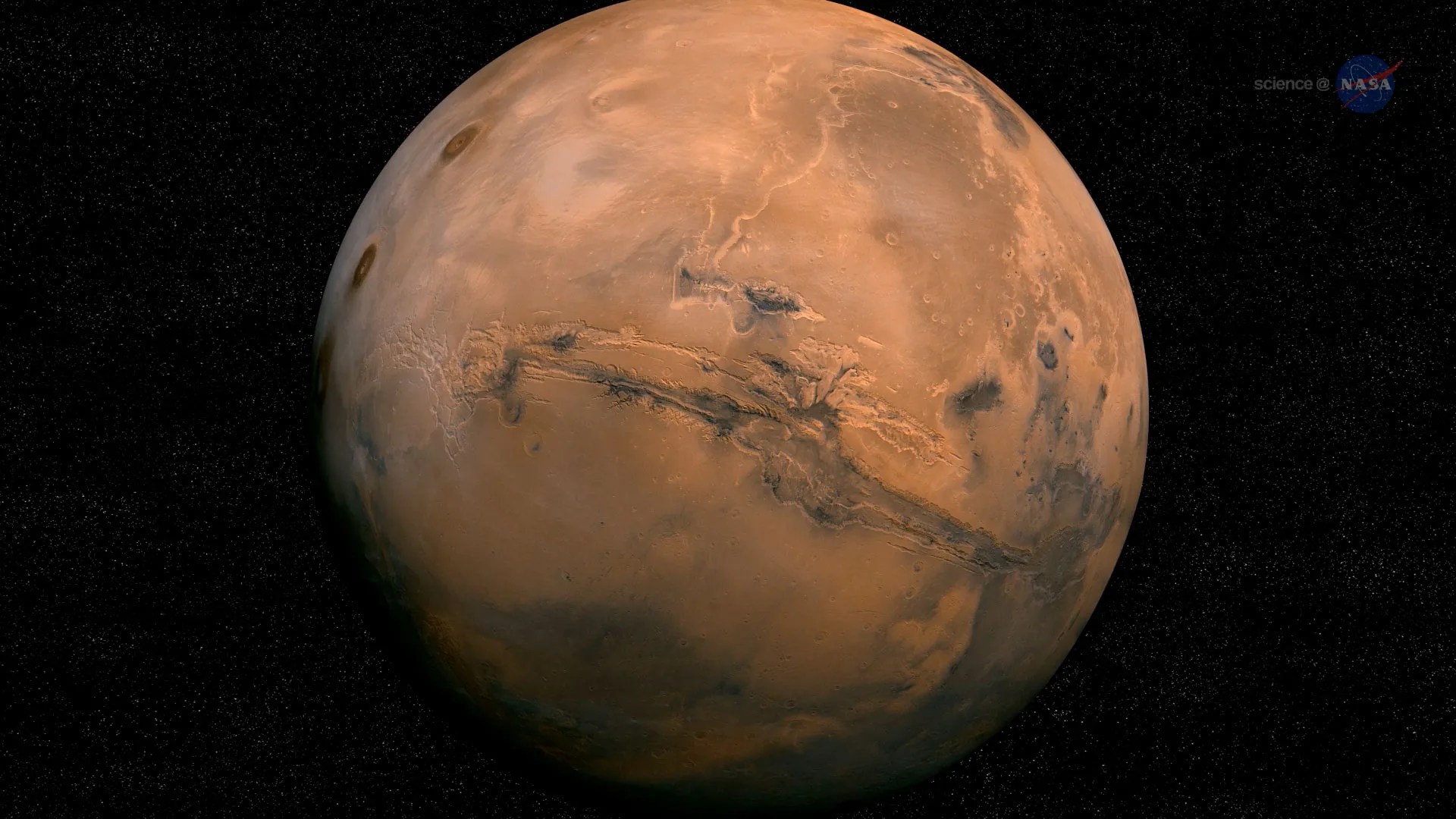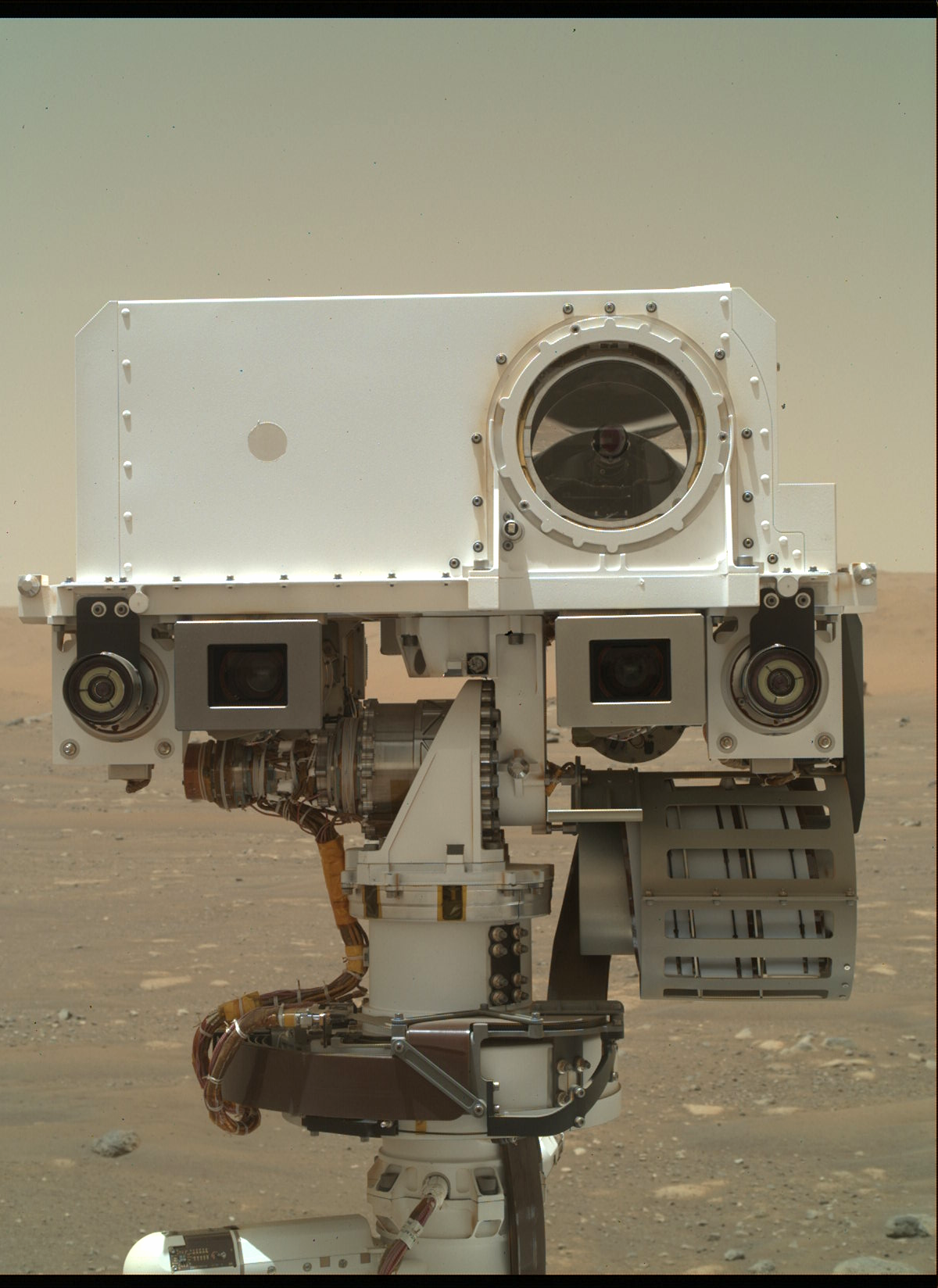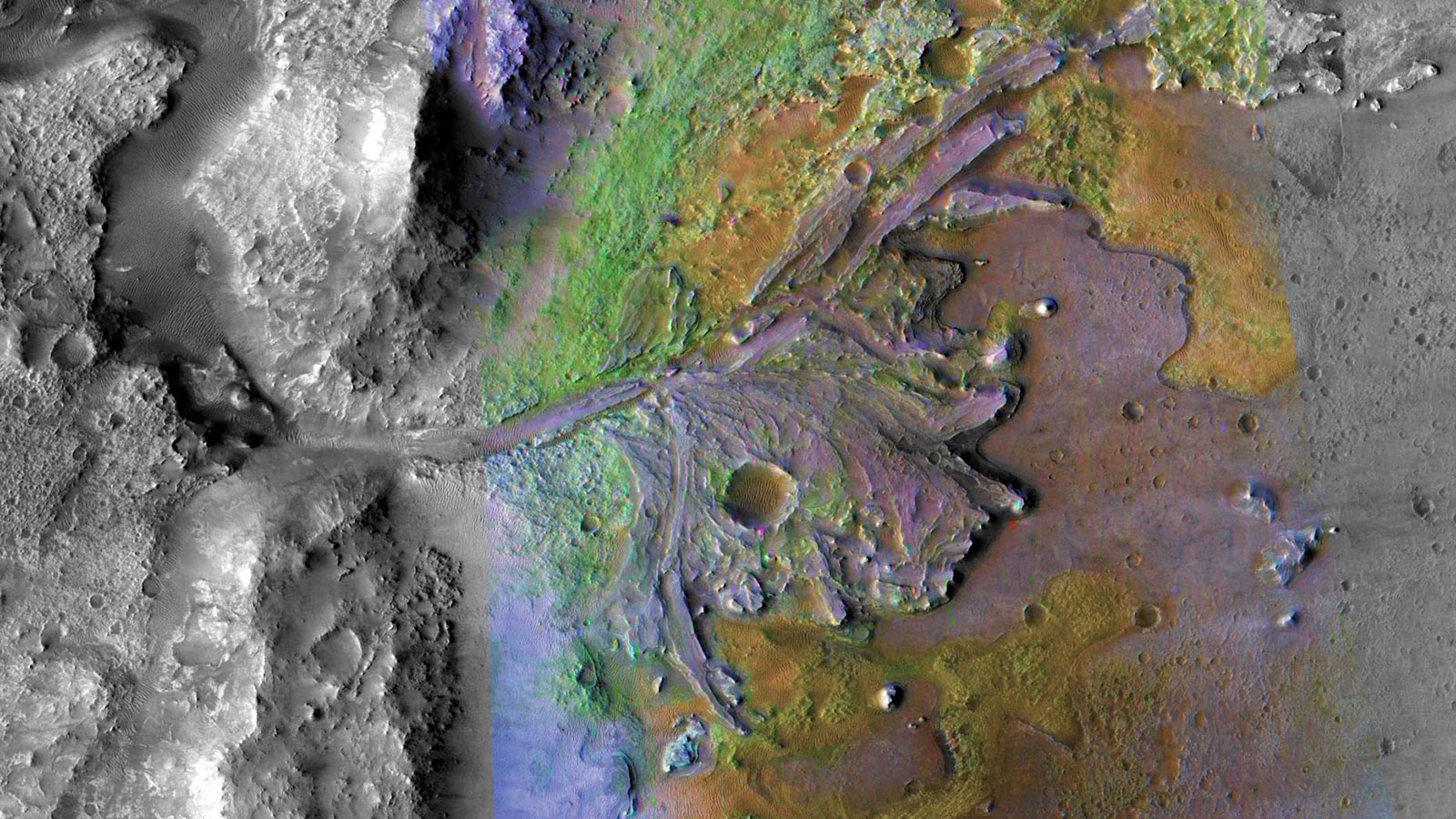2 min read
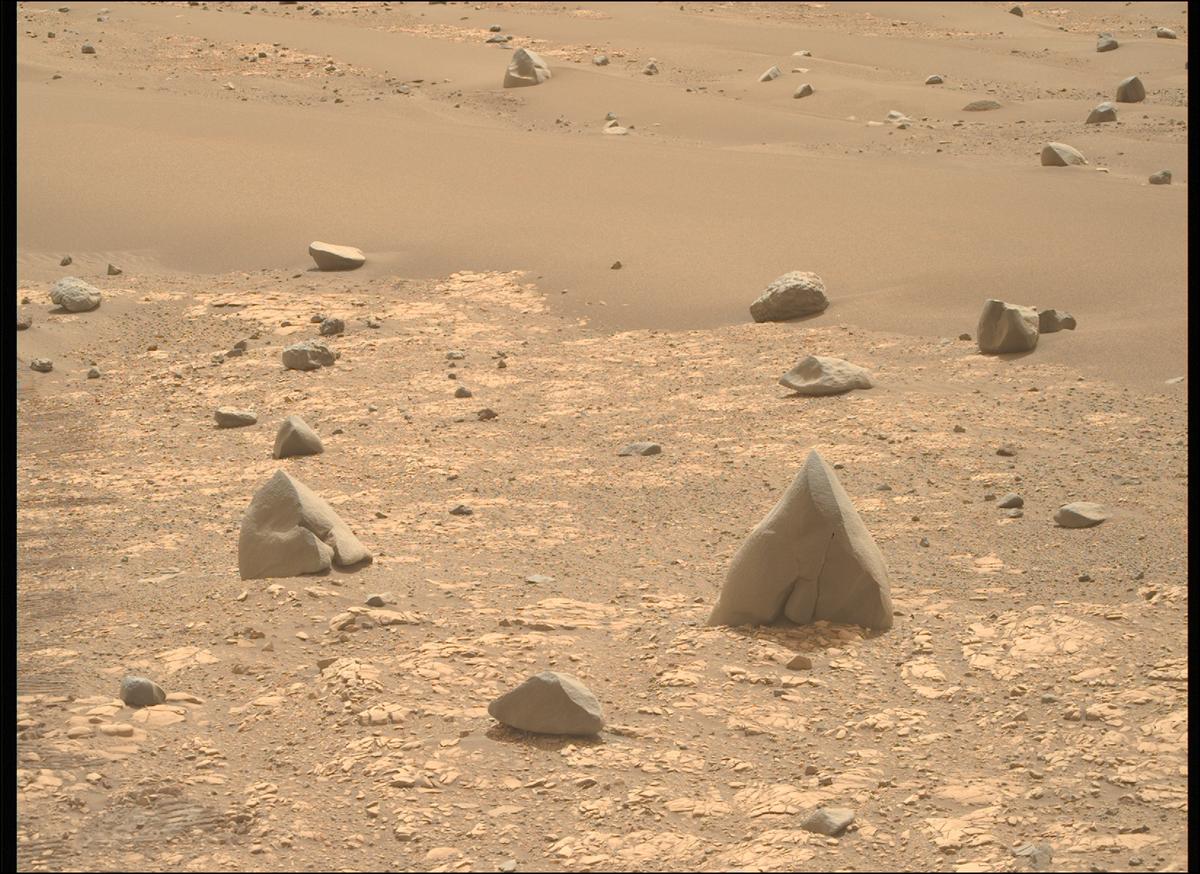
From the image Perseverance recently took at Yori Pass, we can see that there are gray rocks scattered on top of a tan colored rock surface below. What do these different colors tell us? As planetary geologists, our job is to figure out through physical and chemical observations the story that these rocks tell us about Yori Pass and its place within the delta in Jezero Crater. Color is one of the first clues we can use that might hint at how the rocks formed.
When we see different colors like in this case, we might suspect that the two types of rocks had different origins. Other physical characteristics include size, angularity, texture, and context, which we can all use to piece together how the rocks got to be the way they are today. For example, the gray, more angular (sharper-edged) rocks sitting on top appear similar in appearance to an outcrop the rover has passed in another area called Boston Knob. The geologic term for this kind of rock at Yori Pass that sits on top is a “float rock” because it looks like it was transported here rather than forming in place. A few mechanisms by which this might happen include ejecta from crater impacts, entrainment in glaciers, or transport by wind or water. Considering the color of the underlying rock, the rock below appears more consistent with the type of terrain seen at other outcrops of the delta that might be fine-grained and likely to contain clay minerals. Clay minerals formed in the delta are exciting for potential preservation of biosignatures. Both types of rocks seen here at Yori Pass are interesting, though for different reasons because they may each point to different conditions and times within the history of the delta.
We have just started studying this new area at Yori Pass. On sol 614 (November 11, 2022), we performed proximity science using the PIXL and SHERLOC instruments on an abraded surface of the tan colored rocks, so we are looking forward to using the results to better constrain the chemical composition to determine whether we should sample here!
Written by An Li, Student Collaborator on PIXL at University of Washington

